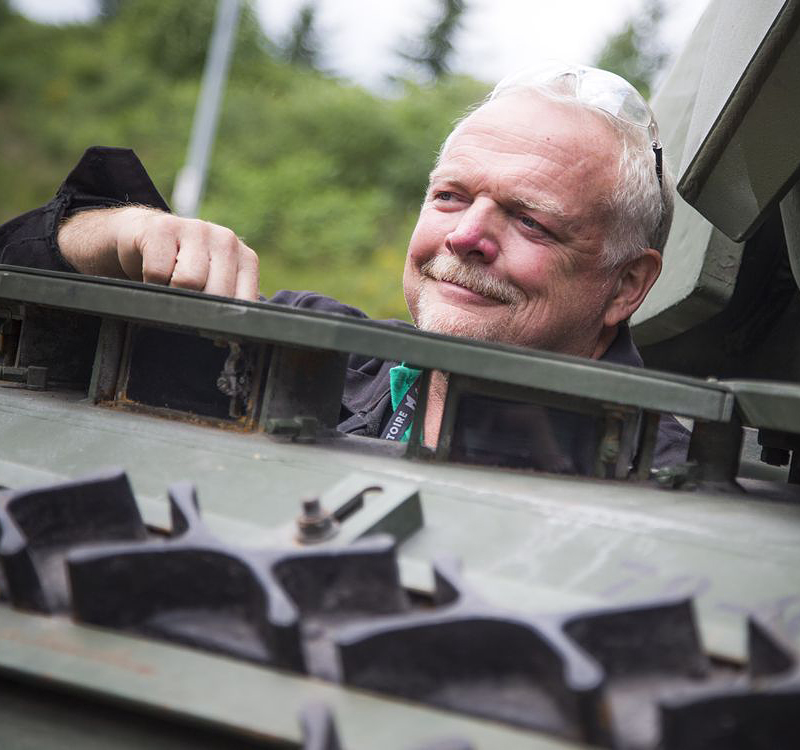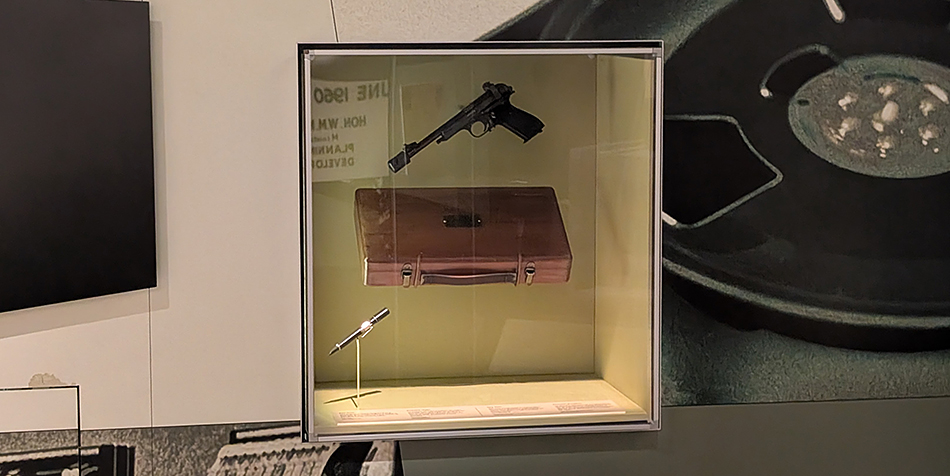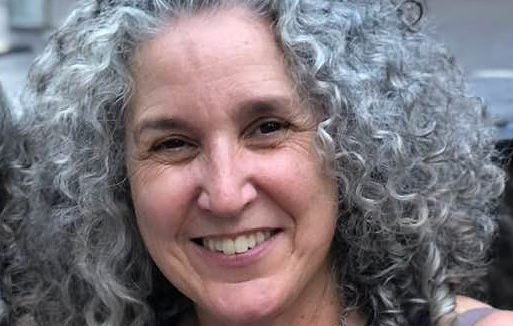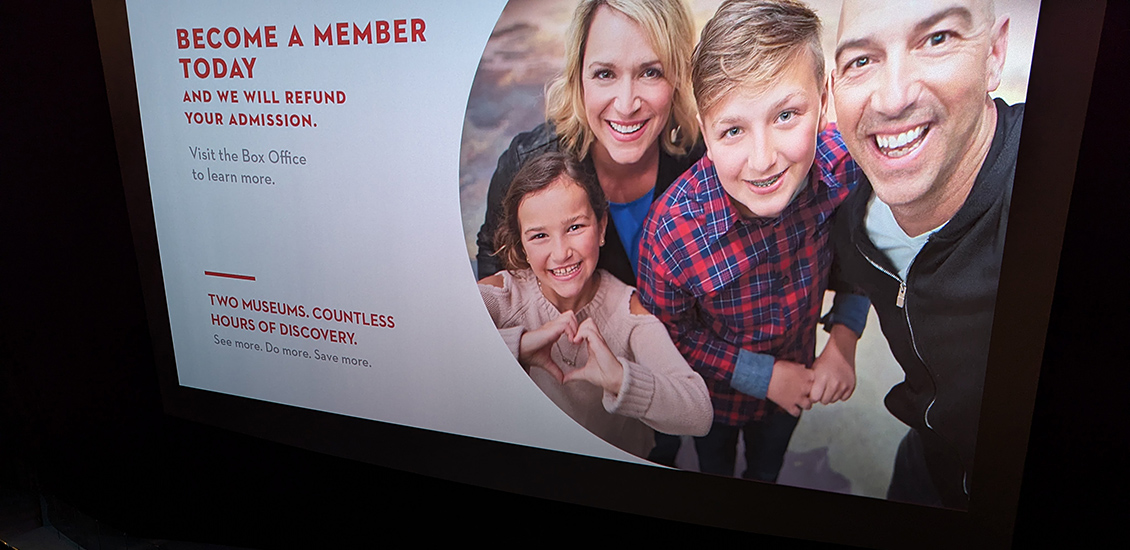Mike Miller, Artifact Restoration Preparator
1. You play a key role at the Canadian War Museum in artifact restoration and preparation. What does this entail?
I work in what we call the “tank shop,” where I collaborate with a dedicated team of volunteers to restore and maintain the Museum’s military vehicle collection. Our work ranges from routine maintenance to extensive, detailed restorations. Some vehicles require years of work to bring them back to life, but the results are always incredibly rewarding. I also lead tours for school groups, military personnel, and VIPs, giving them a glimpse behind the scenes!
2. What drew you to this type of work?
I’ve worked in the museum world for decades, providing technical services for exhibitions at the Canadian Museum of History, the War Museum, the Museum of Nature, and many more museums internationally. In preparation for the 50th anniversary of D-Day, I began volunteering in the tank shop, which quickly became a passion. In 2015, I was given the opportunity to take over the shop, and I haven’t looked back since.

Michael Miller
Photo credit: Ashley Fraser
3. I’m sure you have many fascinating stories from your work. Does anything stand out for you?
Yes. One of the highlights of my career was restoring an armoured car from the First World War, the last surviving example of its kind. This very vehicle was in the Canadian Army victory parade in Mons, Belgium on November 11, 1918. I was then honoured to drive it in a commemorative parade in Mons in 2018 to mark the 100th anniversary of the end of the First World War. That same trip also gave me the chance to draw on my previous experience by installing a remarkable exhibition of paintings by Alfred Munnings at the National Army Museum in London, UK. It was an unforgettable combination of history, art and commemoration.
4. Restoring historical military vehicles must come with challenges. What are your plans for the Museum’s latest acquisition, the Beach Armoured Recovery Vehicle (BARV)?
The BARV is an incredibly rare vehicle — I believe it is one of only five still in existence — and it has a remarkable history tied to Normandy Landings on D-Day. Essentially, it functioned as a deep-wading bulldozer, even requiring a diver to help operate it. Our plan is to carry out a full cosmetic restoration of the exterior and extensive work on the interior to bring it back to operational condition. It’s a fascinating piece of engineering, and I’m really looking forward to the challenge of restoring it.



